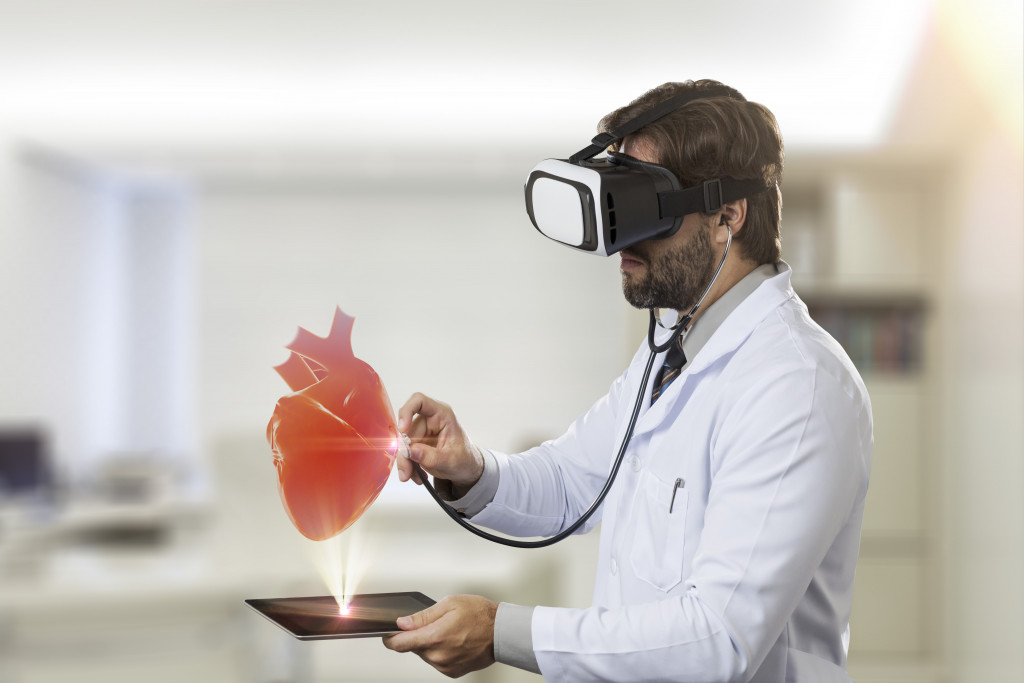- Patient experience is integral to healthcare success in today’s digital world.
- Technology can revolutionize the healthcare industry and provide better patient care and experiences.
- Healthcare providers prioritizing patient satisfaction often find that their patients have better outcomes.
- Leveraging AI, telemedicine, wearable devices, EHRs, and patient portals can help improve the patient experience.
- Technology can help facilitate communication between healthcare providers and patients, reduce unnecessary visits, and save time.
In today’s digital world, technology is vital in every aspect of our lives, including healthcare. Technology has revolutionized the healthcare industry and has the potential to provide better patient care and experiences.
Patient experience is the sum of all interactions between the patient and the healthcare provider. By incorporating technology into healthcare, it can lead to better patient experience. This article will discuss ways healthcare providers can leverage technology to enhance patient experience.
The Importance of Improving Patient Experience
Providing quality healthcare isn’t just about diagnosing and treating illnesses. The way patients feel during and after their visit is just as important. Improving patient experience has become increasingly recognized in the healthcare industry in recent years.
Healthcare providers prioritizing patient satisfaction often find that their patients have better outcomes, are more likely to adhere to treatment plans, and are more loyal to their practice. By improving patient experience, healthcare providers can create a more positive and welcoming environment that patients will appreciate and remember long after they leave.
How Will the Facility Benefit
In general, improving patient experience can benefit healthcare facilities in multiple ways. For example, improved patient satisfaction often leads to increased referrals and better reviews on social media platforms.
It also helps create a more positive atmosphere for their staff, leading to greater engagement and lower turnover rates. Furthermore, it can lead to higher profitability as patients are more likely to return and pay for services.
Ways to Leverage Technology to Improve Patient Experience
There are many ways that healthcare providers can leverage technology to improve the patient experience. Here are a few:
Artificial Intelligence

AI is now a standard feature in many healthcare-related apps and tools. With AI, providers can offer personalized care and treatment plans tailored to each patient’s needs. Additionally, AI technologies can help streamline administrative tasks such as appointment scheduling and medical records management.
But aside from these, many organizations now offer specialized AI consulting services for healthcare facilities to help them develop better patient experience strategies or provide more tailored medical services. These consultants can advise on how to use AI to improve patient experience.
Telemedicine
Telemedicine is a digital platform that allows patients to access healthcare services remotely. With the help of telemedicine, patients can be diagnosed and treated from the comfort of their own homes.
Telemedicine is a game-changer for patients with difficulty traveling or living in rural areas. Telemedicine not only saves time but also reduces healthcare costs and helps to improve patient satisfaction.
Wearable devices
Wearable devices like Fitbit, Apple Watch, etc., have recently gained massive popularity. These devices are of great use to healthcare providers in monitoring patients’ health and keeping track of their progress.
By using wearable devices, patients can monitor their health and share their progress with their healthcare providers. This helps healthcare providers keep track of their patient’s health and motivates patients to stay on track.
Electronic health records (EHRs)
EHRs allow healthcare providers to access patients’ health records at any time. It reduces the need for patients to fill out forms repeatedly as their medical histories are accessible by the providers.
EHRs also provide a way for healthcare providers to communicate with each other. This makes it easy for healthcare providers to collaborate and deliver coordinated care, leading to better patient outcomes.
Patient portals

A patient portal is a secure website that gives patients access to their medical data. Patients can view their test results, schedule appointments, and communicate with their healthcare providers. Patient portals are a great way to increase patient engagement in their healthcare. Patients can feel empowered by accessing their health information whenever they want.
Appointment Scheduling
Healthcare providers can provide online scheduling of appointments, reducing the waiting time and ensuring that their patients receive proper care and attention. Software that allows patients to make appointments online and get email or text reminders before their scheduled visit is a great way to enhance the patient experience.
Final Thoughts
In conclusion, technology has the potential to provide better patient experiences by improving communication between healthcare providers and patients, reducing unnecessary visits, and saving time. Telemedicine, wearable devices, EHRs, patient portals, and online scheduling of appointments are a few examples of technology that can be leveraged to provide better patient experiences. By incorporating technology into healthcare, healthcare providers can provide better patient care, which increases patient satisfaction and, ultimately, improves patient outcomes.

